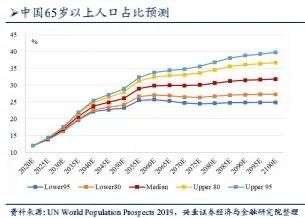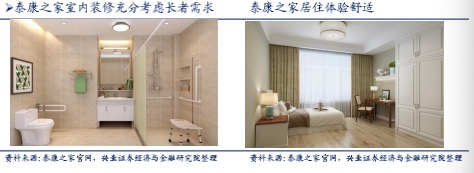Relating to the quality of life
Editor’s note: This article is from the public micro-channel number “to coffee think tank” (ID: laikazk), Author: Shiba Inu YH.
Editor’s note
Everyone will get old eventually. In the face of time and pain, all beings are equal. As time goes by, after happy childhood and vigorous youth, we will always face some major choices.
How do we live in an aging world? This is not only a grand proposition related to the people’s livelihood economy, but also the ultimate exploration of the happiness index of each individual. But in any case, beginning to recognize this problem earlier and prepare earlier may be the best answer we can do as the first generation under the influence of the delayed retirement policy.
Some movies have gone out of the circle recently.
“Nomadland” directed by Zhao Ting won the highest bonus lion award in the main competition unit of the 77th Venice Film Festival, and also became the most popular choice for this year’s Oscar.
Without the gorgeous pictures and exciting lines, this film tells a story about fighting against the “old age”. It is plain and natural, and speaks out. “Nowhere” is a film adapted from the book “Nomadland: Surviving America in the Twenty-First Century” written by Jessica Bruder. It describes the company in the small town where the heroine Fern is in her 60s after the Great Depression. She went bankrupt, her husband passed away, and she was alone but still struggling to live a life without children.
Due to the lack of a fixed residence and stable financial resources, the hostess has to drive around in her RV, find opportunities to do odd jobs everywhere on the road, and continue to encounter elderly people who are almost the same as herself, because of low cost and insufficient social support To support their daily lives, these old people had to leave their homes and wander in their old age.
The lifestyle of these elderly people represented by Fern is in line with the traditional Chinese concept of old people.There is a big difference between being dependent and having support for the elderly. At present, the trend of my country’s entry into an aging society is irreversible. Delayed retirement even rushed into the hot search on Weibo during the two sessions just this month, which attracted attention from all parties.
After reading what happened to Fern, the author fell into deep thought. What will the world look like when the post-80s and post-90s grow old (this group of people are already practitioners of delayed retirement)?
01Delayed retirement is here
Recently, the topic of gradual delay in the legal retirement age rushed into hot searches on Weibo. Deputy Minister of Human Resources and Social Security You Jun said that the current retirement age in my country is generally low, which does not match the average life expectancy, and does not adapt to changes in population structure and aging. The development trend of globalization does not adapt to changes in the relationship between labor supply and demand, resulting in a waste of human resources. However, the specific plan is still under study because it involves the vital interests of the majority of employees.
One stone stirred up waves. Some Weibo netizens said, “Under the current 996 work system, I am afraid that I will not be able to retire.” It’s the hardest time to get a pension.” Some netizens worry, “Many recruitments are now restricted to those under 35 years old, and people over 50 years old are not allowed to sell vegetables. There are also college students who can’t find a job with their academic qualifications. “, “I don’t pay medical insurance or social security now. It’s not enough to spend. When I get old, let my fate.” Some netizens joked that “a good way is to save trouble if you don’t have a baby. It is hard for you to have a baby. It’s also bitter. Maybe the child will retire at the age of seventy. If you don’t have a baby, you won’t have a baby.”
In March of this year, Hu Zucai, deputy director of the National Development and Reform Commission, also stated at a press conference held by the State Council Information Office that during the “14th Five-Year Plan” period, my country will enter a moderate aging stage and actively respond to the rise of population aging. The national strategy will vigorously develop inclusive elderly care services.
From the comments of the previous netizens, it can be seen that many people have expressed their concerns about the future pension problem, fearing that they will have no physical strength and cannot find a job when they are old, and they all feel that there are a lot of sub-healthy people today. It is a question of whether people in the workplace can live to get their pensions back.
02Establish a multi-level elderly care system
In fact, these concerns and problems of the aforementioned netizens all stem from the incompleteness of our country’s current pension security system, and the lack of diversification and modernization of pension methods. In the traditional old-age care thinking of “raising children to protect the elderly”.
ButIn recent years, with the rapid increase in the number of applicants for the public examination, competition has become more and more fierce, and most people have no chance to enter the system; moreover, today’s post-90s and post-00s are mostly only children, buying houses in today’s huge housing Under pressure and employment pressure, “raising children to prevent old age” is no longer so reliable.
It is true that the average life expectancy in our country is increasing, the fertility rate is decreasing, the population is accelerating aging, and the dependency ratio of the elderly population is rising. According to statistics, the six population censuses in 1982, 1990, 2000, 2005, 2010, and 2015 show that the life expectancy of the Chinese population is 67.80, 68.55, 71.40, 72.75, 74.83, 76.34 years old and increasing; the natural population growth rate except for the opening of the second child in 2016 In addition to the recovery of the policy, it has dropped to a historical low of 3.34‰ in 2019 year by year.
Among them, the proportion of the elderly population (65 years and above) has gradually increased. In 2000, China’s aging population exceeded 7% and entered an aging society. Since then, the number of aging population has increased at a compound annual growth rate of 3.7% to 176 million in 2019, accounting for 12.6%; and the aging rate has increased, accounting for The time it takes to increase the ratio by 1 percentage point has dropped from about 8 years before 2008 to about 3 years after 2008. The elderly dependency ratio has accelerated from 2005 to 17.8% in 2019.
Furthermore, according to United Nations forecast data, under pessimistic, neutral, and optimistic assumptions, the proportion of China’s elderly population will exceed 20% by about 2035, and the elderly dependency ratio will exceed 30% by then. China will be China in the next 20 years. The population is accelerating the ageing period. The experience of developed countries that have entered a society with an aging population for many years shows that the establishment of a sound pension system is an effective way to deal with the burden of pensions.
03Solving the road to elderly care
At present, the pension benefits of the first pillar in our country are insufficient, and the second pillar actually benefits the limited population, and the third pillar is urgently needed to be supplemented.
From the actual situation in China, the first pillar-based security structure has increased the financial burden and the treatment level is insufficient, the second pillar can actually benefit the limited population, the first and second pillars are insufficient, and the third pillar is needed.Pillar fill. Judging from overseas experience, differences in national conditions across the world have led to differences in pension systems. Countries such as the Netherlands and Denmark have leading pension indices, but are based on a relatively small population base and developed economies. The US three-pillar system is more balanced , It also has a good guarantee effect.
The deficiencies of the first pillar are mainly reflected in two aspects. First, the basic pension insurance benefits of urban and rural residents are limited. In 2019, 123 million people enjoyed basic pension insurance benefits for employees, per capita of RMB 3,332.5 per month, which can meet basic living needs; during the same period, 1.60 trillion people across the country enjoyed basic pension insurance benefits for urban and rural residents, per capita of RMB 161.9 per month, instead of The rate is low.
The second pillar is the financial burden brought by the first pillar. It is directly manifested that the important contributor to the basic old-age insurance for urban and rural residents is the government. The government pays the basic old-age pension for the elderly and provides subsidies for residents’ contributions. According to the China Pension Actuarial Report 2019-2050 issued by the Academy of Social Sciences in April 2019, the cumulative balance of my country’s basic pension insurance may be exhausted in 2035, and the pension security gap in my country may reach 8-10 trillion during the 14th Five-Year Plan period. yuan.
Industrial Securities believes that the commercial pension insurance industry chain can better meet the needs of the elderly and has a comparative advantage. Commercial pension insurance mainly provides financial guarantee for the elderly life, but the elderly population is facing serious illness, physical decline and even disability (according to the disability rate of the Office of the Health China Action Promotion Committee and the data of the elderly population from the National Bureau of Statistics, my country’s disability at the end of 2019 And some disabled elderly people over 40 million).
At the same time, ordinary housing has a low degree of livability for the elderly population, and the improvement of residents’ living standards also puts forward higher requirements for elderly care services. The combination of old-age pension, old-age community, old-age services, and health management can better meet the needs of old-age security, and it is also policy-oriented. The functions of the first and second pillars are mainly pension payments, so the commercial pension insurance industry chain has a comparative advantage.
Moreover, the profitability of the commercial pension industry chain is good, which can drive insurance companies to make efforts. First, the sale of pension annuities itself brings scale and underwriting efficiency. Second, the industry chain of “pension annuity + senior care community + senior care services” is digging in value. Investing in pension real estate can enrich the types of asset allocation, diversify investment risks, extend the duration of assets, and obtain long-term stability.Set income. The third is the wide range of customer groups that can be reached in the commercial elderly care industry chain.
The long-term and guaranteed return attributes of commercial pension insurance have comparative advantages in the context of de-just exchange and falling interest rates; the increase in the equity investment ratio of insurance companies is conducive to raising the pension The actual rate of return of an annuity product. In 2021, the double-digit double-digit premiums for new single-digit premiums of major life insurance companies’ open annuity products have also shown that life insurance annuities, a form of savings and wealth management, are favored by the market.
Therefore, under the current policy guidance, the third pillar account system may be built, the competitiveness of pension annuity products will be improved, and the commercial pension industry may have a long-term favorable development in the future.
Conclusion
The “Fourteenth Five-Year Plan” outlines a separate chapter for “Improving the Elderly Care Service System”, proposing to promote the coordinated development of the elderly care industry and the elderly care industry, improve the basic elderly care service system, vigorously develop inclusive elderly care services, and support family commitments The old-age care function is to build an old-age care service system that is coordinated with home and community institutions and combines medical care and health care. Aging is not a problem faced by China alone, but a global problem, and we need to look at it objectively and rationally.



